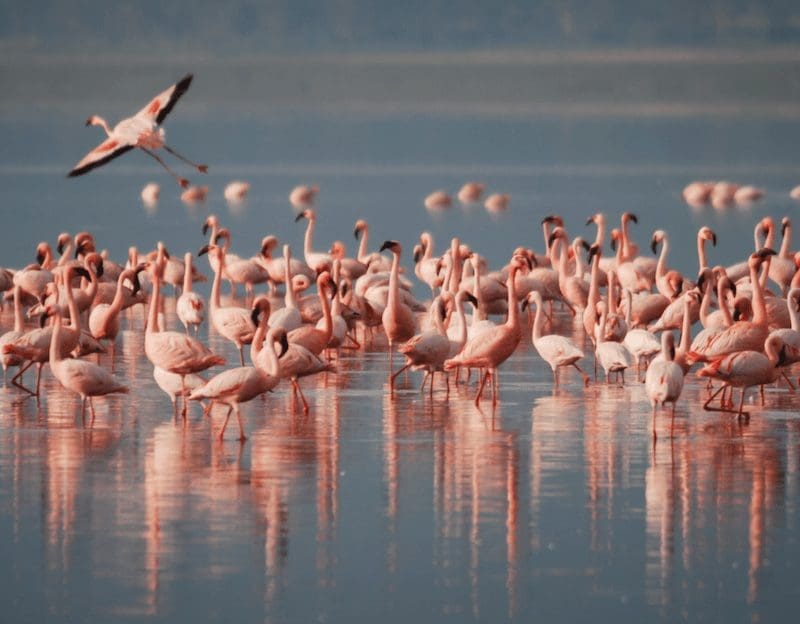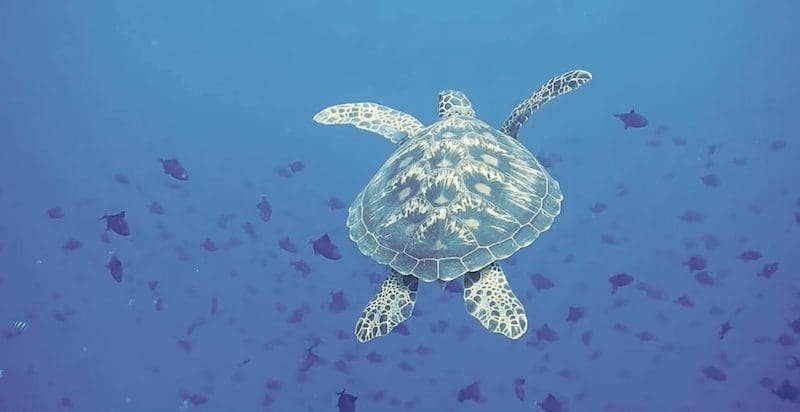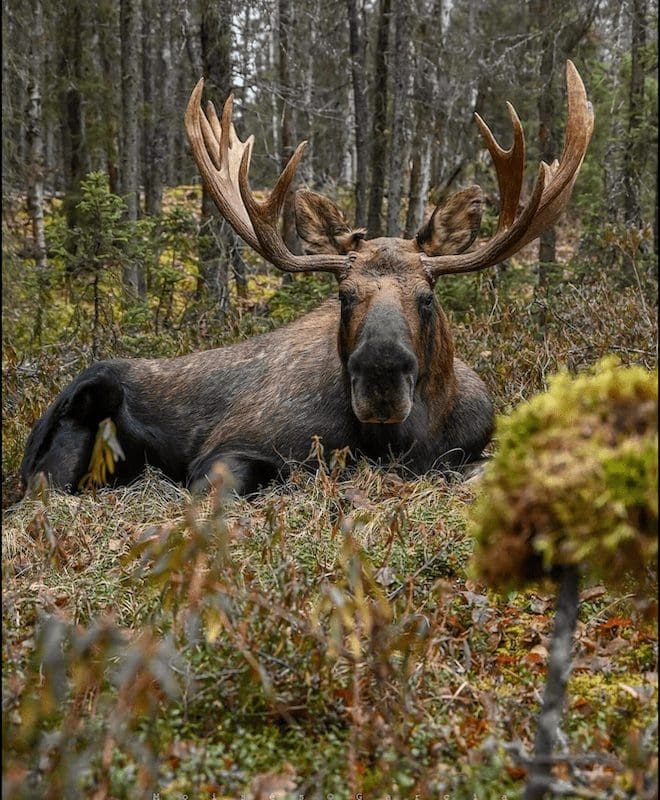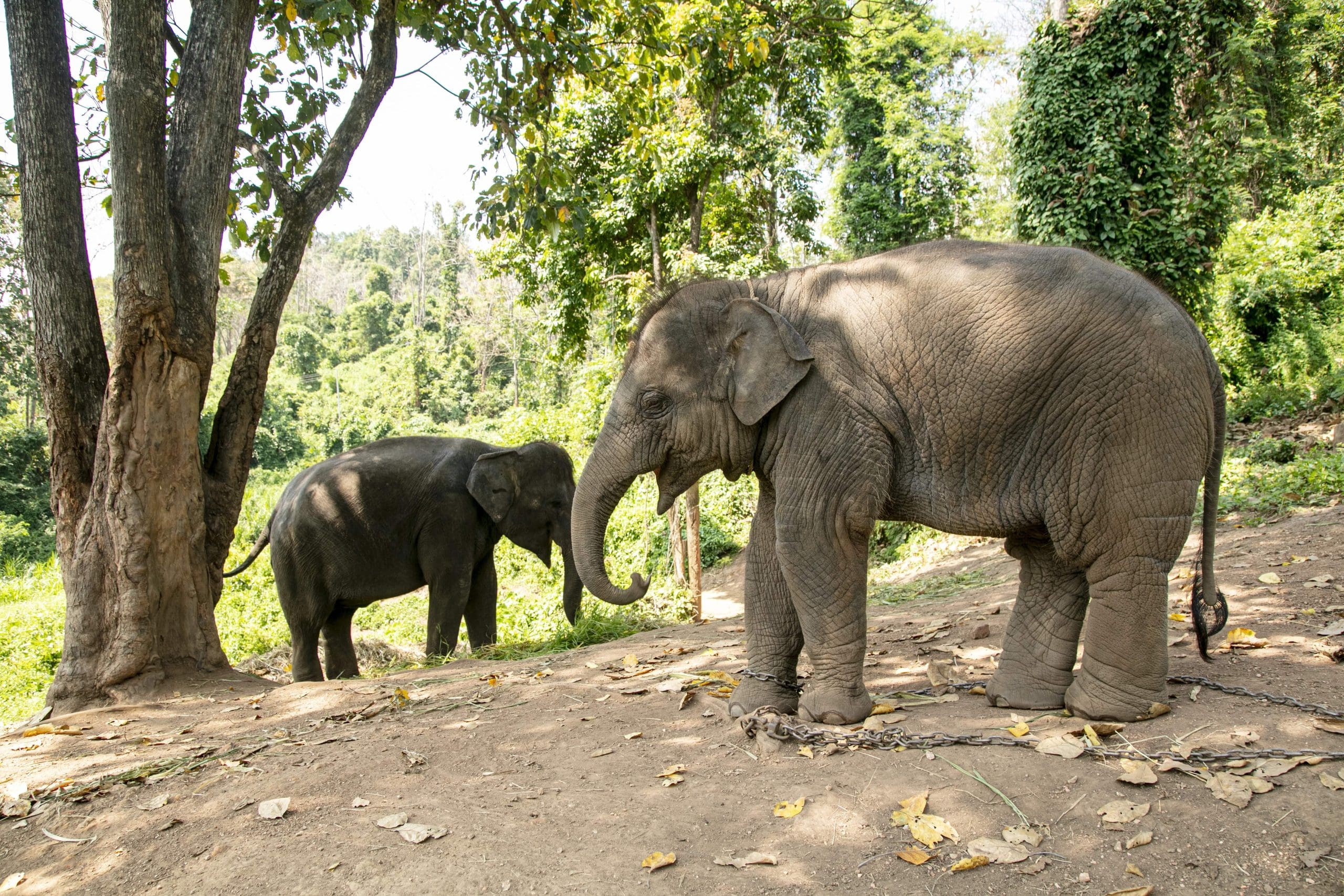Interested in ethical animal tourism? Read on for the best experiences worldwide this year.
If you’re like me, spotting wildlife on your travels is one of the most exciting parts of the trip. I’ve been lucky enough to visit a few incredible animal rescue centers and sanctuaries around the world, and honestly, they always end up being the highlight of my trip. There’s just something magical about seeing animals up close—especially when you know they’re being respected and cared for.
And it’s not just about the cuteness overload (though let’s be real, baby sloths and curious monkeys are hard to beat). These places also teach us so much about the animals, the environment, and what we can do to help. For kids, it’s often a life-changing experience. Seeing wildlife in ethical settings helps shape how they see the world— I hope it sparks lifelong respect for nature and conservation in my kids.
In this guide, we’re going to dive into the world of ethical animal tourism. I’ve personally visited some of these places, and others are high on my bucket list. Every experience on this list has been chosen because it puts animal welfare first and would be a really great addition to a family trip to that part of the world.
Top 5 Ethical Wildlife Experiences in the World

1- Jaguar Rescue Center – Puerto Viejo, Costa Rica
What to Do
Come meet sloths, monkeys, toucans, snakes, and more at this amazing rescue center on the Caribbean coast. The guided tours (offered daily) give you a close-up look at how injured and orphaned animals are being cared for before heading back to the wild. You’ll hear their stories and learn loads about Costa Rica’s wildlife. Want to stay longer? They’ve got a volunteer program too.
Why It’s Ethical
The Jaguar Rescue Center rescues animals that are hurt, sick, or orphaned and works hard to release them into protected areas like La Ceiba Forest.
They don’t allow petting or posing with animals, and they fund themselves through tours and donations—not government money.
They even help protect wildlife by insulating local power lines to prevent electrocutions. We actually saw them save a massive sloth which was up on an electric line!
How to Get There
The center is just 10 minutes outside Puerto Viejo in Playa Cocles. You can get there by car, bike, or taxi. Buses also run between towns nearby, so it’s pretty easy to reach. When we visited we got there by tuk tuk since we were staying in Puerto Viejo.
When to Go
They’re open year-round, with tours twice a day (plus private ones in the afternoon). December to April is sunny and dry, but May to November is lush, green, and way less crowded.
Tip: Book ahead online—spots fill up fast, especially in high season. Bring bug spray, wear comfy shoes, and get ready for a super inspiring visit. This was definitely one of my favorite parts of the trip!
2- Ethical Birding Tours in Portugal
What to do
Portugal is a birdwatcher’s paradise. I’m always amazed at the diverse habitats and a rich variety of bird species we get to see there. One standout provider I’ve toured with is Salva Fauna, which offers guided birding tours across regions like the Algarve, Alentejo, and the Tagus Estuary.
Their tours are designed for small groups, which means a personalized and immersive experience. You’ll get to see species like the Great Bustard, Spanish Imperial Eagle, and various migratory birds, all while exploring some of Portugal’s most beautiful landscapes.
Why It’s Ethical
Salva Fauna is committed to responsible wildlife tourism. They adhere to strict ethical guidelines, including:
- No baiting or calling of birds to alter their natural behavior.
- Avoiding sensitive nesting areas to prevent disturbance.
- Educating participants on bird conservation and habitat protection.
Additionally, 10% of the tour profits are donated to the Salva Fauna Conservation Fund, directly supporting local wildlife conservation efforts.
How to Get There
Most tours begin in easy locations like Lisbon or regional towns like Beja and Mértola. Depending on the tour, transportation during the excursion is provided.
When to Go
Birding in Portugal is great year-round, but the best times are during migration seasons:
- Spring (March to May): Witness the arrival of migratory birds and breeding activities.
- Autumn (August to November): Observe birds preparing for migration, with opportunities to see a variety of species.
Each season offers unique sightings, so choose based on the species you’re most interested in.
Tip: I just loved the peaceful vibe on the tour I did of the Tagus Estuary and how much I learned from my guide. Bring binoculars if you have them (our guide had a spare!), wear comfy walking shoes, and pack layers—it can get windy out there!
3- Diving in Fernando de Noronha, Brazil

What to Do
Fernando de Noronha is a diver’s paradise. With over 25 dive sites, you can explore incredible coral reefs, underwater caves, and even a sunken ship. Expect to see sea turtles, dolphins, reef sharks, and a rainbow of tropical fish. And don’t worry, local operators like Noronha Diver offer guided dives that cater to all levels, so no need to be an expert diver.
Why It’s Ethical
The entire archipelago is a UNESCO World Heritage Site and part of a protected marine park. Diving here supports conservation efforts, as operators follow strict guidelines to minimize environmental impact. By choosing reputable certified dive centers, you’re contributing to the preservation of this unique ecosystem.
How to Get There
You’ll need to fly into Fernando de Noronha Airport, with flights available from Recife or Natal. Once on the island, dive shops are easily accessible, and many offer transportation to and from dive sites.
When to Go
Diving is great year-round, but the best visibility is from August to December. Water temperatures hover around 28°C (82°F), and visibility can reach up to 50 meters!
Tip: Choose a dive center before you go and book your dives in advance, especially during peak season. Also, be prepared to pay an environmental preservation fee upon arrival, which helps fund local conservation projects.
4- Galapagos Safari Camp – Santa Cruz Island, Ecuador

What to Do
This place is a total dream if you want to explore the Galápagos without hopping between boats every day. Galapagos Safari Camp is a land-based eco-lodge where you stay in safari-style tents and head out on daily adventures—think hiking, snorkeling, and spotting wildlife like giant tortoises, sea turtles, blue-footed boobies, and marine iguanas. You’ll also take day trips to nearby islands with expert guides who really know their stuff.
Why It’s Ethical
The camp runs on land that used to be a cattle farm, but they’ve rewilded it with native trees and plants. They use solar power, low-impact lighting, and source food locally. Even better? You can help plant trees to support reforestation while you’re there. It’s all about giving back to the land and helping preserve what makes the Galápagos so special.
How to Get There
You’ll fly into Baltra Airport, hop on a short ferry to Santa Cruz Island, and then take a 30-minute drive into the lush highlands. The camp can arrange all your transfers, so it’s really not difficult.
When to Go
You can visit year-round! December to May is warm and sunny—perfect for snorkeling. June to November is cooler, with more wildlife activity on land. There’s no bad time, just different things to do and see depending on what you prefer.
Tip: Ask for Tent #9—lots of return guests say it has the best view and total privacy. Also, bring a good pair of binoculars—birdwatching right from your tent is next-level!
5- Alaska Wildlife Conservation Center – Portage, Alaska

What to Do
Just an hour south of Anchorage, the Alaska Wildlife Conservation Center (AWCC) is a haven for Alaska’s iconic wildlife. Stroll or drive along a 1.5-mile loop to see rescued animals like brown and black bears, moose, wolves, bison, muskox, and more, all in spacious enclosures that mimic their natural habitats.
For a more in-depth experience, book a “Walk on the Wild Side” tour or a bear encounter to learn about the animals’ stories and the center’s conservation efforts.
Why It’s Ethical
AWCC is a non-profit sanctuary dedicated to preserving Alaska’s wildlife through conservation, education, research, and quality animal care. They take in orphaned and injured animals year-round, giving them a permanent home when they can’t be release in the wild. The center also participates in significant conservation projects, like the reintroduction of wood bison to the Alaskan wilderness after a 100-year absence.
How to Get There
The center is located at Mile 79 of the Seward Highway in Portage, about 47 miles from Anchorage. You can drive there in under an hour. Alternatively, the Alaska Railroad offers a scenic route to the nearby Portage station, with a journey time of approximately 3 hours and 45 minutes.
When to Go
AWCC is open year-round, and each season offers a unique experience. Summer (June to September) is ideal for viewing active bears and other wildlife. In winter, while bears hibernate, animals like moose, wolves, and bison remain active, and the snowy landscape provides a picturesque backdrop.
Tip: It’s recommended to arrive early in the day, when animals are most active. Also, renting a kick-sled in winter is a fun way to explore the center, especially if you’re traveling with kids.
What is Ethical Animal Tourism?

Think of it as a way to enjoy wildlife experiences that are kind to animals, support conservation, and benefit local communities. It’s about making sure our adventures don’t come at the expense of the creatures we want to see.
Basically, ethical animal tourism is all about making sure that animals are treated with respect and care. This means:
- No forced interactions: Animals aren’t made to perform tricks, pose for selfies, or give rides.
- Natural habitats: Animals live in environments that are similar to their wild homes.
- Conservation focus: The experience supports efforts to protect and preserve wildlife.
- Community involvement: Local people benefit through employment and education opportunities.
For example, visiting a sanctuary where rescued animals are rehabilitated and released back into the wild is a great ethical choice. On the other hand, places that offer elephant rides or let you cuddle tiger cubs often involve practices that are harmful to the animals.
Remember, ethical animal tourism isn’t just about avoiding harm—it’s about contributing to the well-being of animals and their habitats. By choosing responsible experiences, you’re helping to ensure that wildlife thrives for generations to come.
Issues with Wildlife Tourism
Let’s be honest—wildlife tourism can be a bit of a mixed bag. On one hand, it gives you the chance to see amazing animals up close and learn about nature. But on the other hand, it can do some serious harm if it’s not done right.
I’ve seen both the good and the horrifying, and it’s definitely made me more careful about which centers I choose to encourage and advocate for.
Common Problems
Not every animal experience is kind- whether it be caused by ignorance or greed. Here are a few common problems:
- Animals Made to Perform or Pose: Think elephant rides, tiger selfies, or swimming with dolphins in pools. These animals are usually trained using harsh methods, and they live in stressful, unnatural conditions.
- Tiny or Dirty Enclosures: Many animals in tourist areas are kept in cages or spaces that are way too small. They might not get proper food, care, or even space to move around. That takes a serious toll on their health.
- Messing with Natural Instincts: Feeding or touching wild animals can actually change how they act. They can become dependent on people or forget how to survive in the wild, which isn’t good for them in the long run.
- Shady Business: Sadly, some places are just covers for illegal animal trade. A well-known example is the Tiger Temple in Thailand, where tigers were being bred and sold. It looked like a sanctuary, but it wasn’t.
These places aren’t always safe for visitors either. When animals are stressed or mistreated, they can react in dangerous ways. There have even been cases where tourists got hurt. One recent example involved a student who was killed by an elephant during a “bathing experience” in Thailand.
How to Spot Unethical Wildlife Experiences: Top Tips
It can be tricky to figure out if a wildlife experience is truly ethical. Some places talk a good game, but the reality behind the scenes is a different story. Here’s how to tell the difference—and feel good about the choices you make when it comes to animal tourism.
1. No Interaction
If a tour or sanctuary lets you ride, touch, or feed wild animals, that’s usually a clear no. Ethical experiences avoid physical interaction because it can stress the animals, change their behavior, or even lead to long-term harm. Even if an animal looks relaxed, it may have been trained or sedated to behave that way. True sanctuaries allow you to observe animals from a safe and respectful distance—no tricks, no forced photo ops, and definitely no hands-on “encounters.”
2. Do Your Homework
Don’t just rely on flashy websites or pretty photos. Dig a little deeper. Look up the organization’s mission and values. Search for third-party reviews on TripAdvisor or Reddit. See what travelers are really saying. Are animals performing tricks? Do they seem overly tame or too close to humans? Reputable places are transparent about their practices, like if they work on rehabilitation or release efforts.
Bonus tip: look up the name of the center followed by keywords like “scam” or “abuse” and see what pops up.
3. Look for Accreditation
Accreditation isn’t everything, but it’s a strong sign a place meets high standards. Trusted organizations like the Global Federation of Animal Sanctuaries (GFAS) or the World Animal Protection’s “Wildlife. Not Entertainers” campaign help vet facilities that truly put animal welfare first. These groups require facilities to avoid breeding, trading, or allowing physical contact with animals for entertainment.
4. Look for Expert Guides
A good wildlife experience is also about learning. When your guide really knows their stuff—like how animals behave, what threats they face, or how they’re being protected—it makes the whole experience more meaningful. Look for tours that work with biologists, conservationists, or local experts who live and breathe wildlife. You’ll leave not just with cool photos, but with new knowledge and respect for the animals.
5. Choose Small Group Tours
Smaller is better when it comes to animal encounters. Big crowds can make animals anxious and disrupt their normal routines. Smaller groups not only create a quieter, less stressful experience for the animals, but they’re better for you too—you’ll have more time to ask questions, take it all in, and move at a relaxed pace. Some ethical tours even cap their numbers to protect the animals’ well-being.
Conclusion
Spending time with animals while traveling is one of those things that really sticks with you. It’s fun, it’s moving, and honestly, it can shift the way you see the world. When you choose ethical animal experiences, you’re not just a tourist—you’re part of something bigger. So keep asking questions, stay curious, and trust your gut. The animals (and the planet) will thank you for it.


